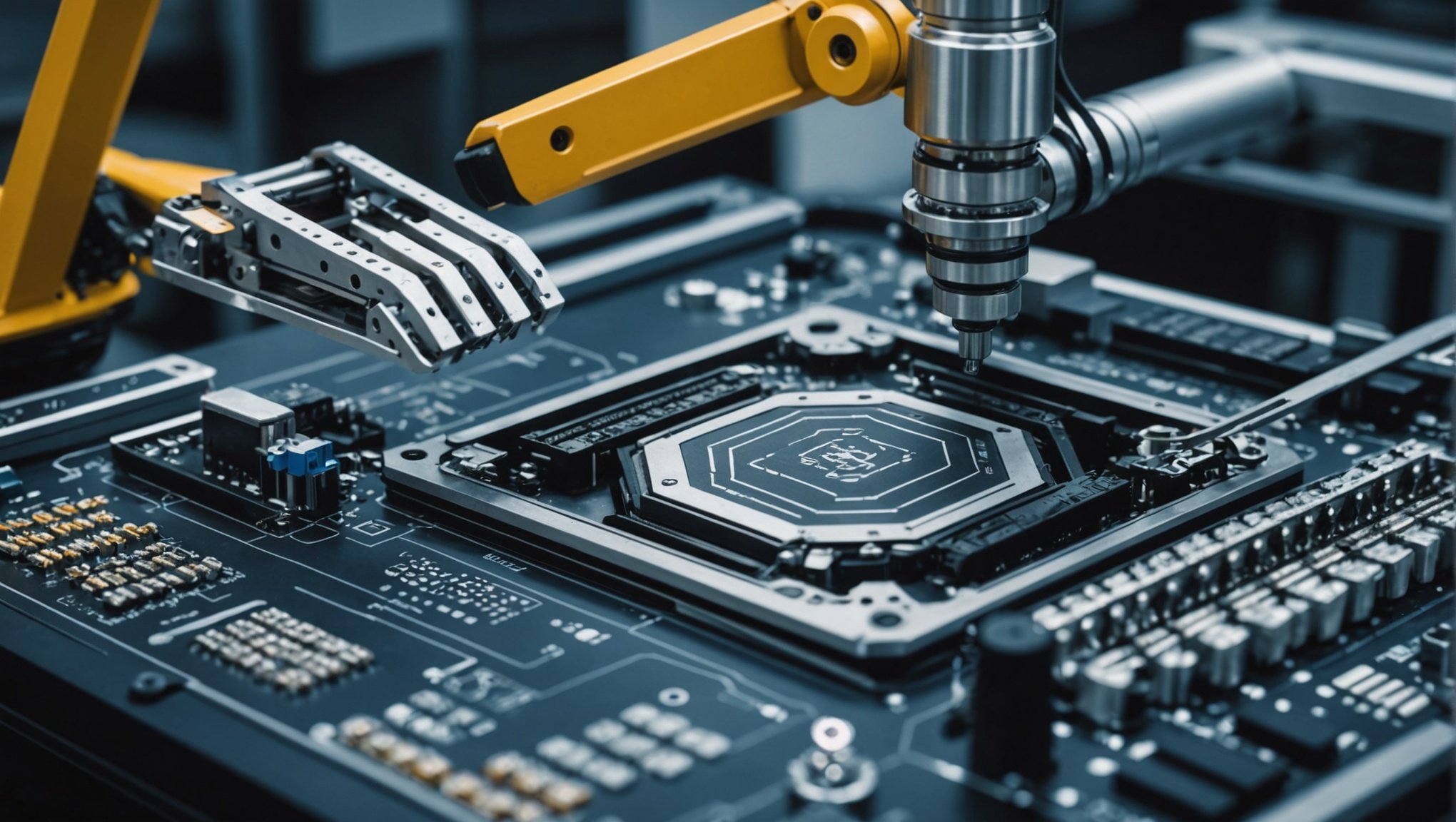In the world of smart manufacturing, the convergence of various advanced technologies has created a landscape ripe for innovation and efficiency. However, a significant challenge remains: processing an enormous amount of data in real-time. This is where edge computing emerges as a transformative force. As of September 8, 2024, we delve into how edge computing can enhance real-time analytics in smart manufacturing, providing a comprehensive and insightful perspective.
Understanding Edge Computing in Smart Manufacturing
Smart manufacturing relies heavily on data analytics to drive efficiencies, optimize processes, and ensure quality control. Traditionally, much of this data was sent to centralized cloud servers for processing. However, the growing complexity and size of data sets necessitate a more immediate solution, leading to the adoption of edge computing. But what exactly is edge computing in this context?
Also to discover : How can AI be used to optimize traffic flow in urban transportation systems?
Edge computing involves processing data closer to where it is generated, rather than relying on distant data centers. This proximity drastically reduces latency, enabling faster decision-making and real-time analytics. In smart manufacturing, sensors, IoT devices, and machinery continuously generate data. By leveraging edge computing, this data is processed at the “edge” of the network, near the source, facilitating immediate insights and actions.
The application of edge computing in smart manufacturing is not just about speed. It also emphasizes security and reliability. By localizing data processing, manufacturers mitigate the risks associated with transferring vast amounts of data over long distances. Moreover, edge computing reduces the dependency on constant internet connectivity, ensuring that operations continue seamlessly even in the face of network disruptions.
Additional reading : What are the best practices for implementing AI in personalized health monitoring apps?
Enhancing Operational Efficiency with Real-Time Analytics
Operational efficiency is the lifeblood of smart manufacturing. Every second counts, and even minor delays can lead to significant productivity losses. This is where the real-time analytics capabilities enabled by edge computing come into play.
By processing data on the edge, manufacturers can monitor and optimize their production lines instantaneously. For instance, edge computing allows for real-time monitoring of machine performance, detecting anomalies or inefficiencies as they occur. This rapid response capability means issues can be addressed before they escalate into costly downtime or product failures.
Consider a scenario where a critical piece of machinery starts to operate below optimal efficiency. Traditional methods might involve data being sent to a remote server, analyzed, and then acted upon. This process could take minutes or even hours. With edge computing, the data is analyzed on-site within milliseconds, and corrective actions can be implemented immediately. This not only minimizes downtime but also extends the lifespan of machinery.
Furthermore, edge computing supports predictive maintenance by analyzing data trends in real-time. By predicting potential equipment failures before they happen, manufacturers can schedule maintenance during non-peak hours, thereby avoiding unexpected interruptions. This proactive approach not only saves time but also reduces maintenance costs and enhances overall operational efficiency.
Data Security and Privacy Concerns
In an era where data breaches and cyber-attacks are prevalent, ensuring the security and privacy of manufacturing data is paramount. Edge computing offers a robust solution to these concerns, providing enhanced security for sensitive information.
By processing data at the edge, manufacturers limit the amount of data transmitted over the internet. This reduces the exposure to potential cyber threats during transmission. Additionally, local data processing means that sensitive information can be kept within the confines of the manufacturing facility, further safeguarding against unauthorized access.
Edge computing also supports the segmentation of networks. By dividing the network into smaller, manageable segments, manufacturers can isolate critical systems, making it harder for an attacker to move laterally within the network. This segmentation enhances the overall security posture, ensuring that even if one segment is compromised, the entire network remains protected.
Moreover, edge computing facilitates compliance with data privacy regulations. Different regions have varied regulations regarding data storage and transmission. By keeping data local, manufacturers can ensure they comply with regional laws, avoiding hefty fines and legal repercussions.
Scalability and Flexibility in Smart Manufacturing
Scalability and flexibility are crucial for modern manufacturing facilities aiming to stay competitive and responsive to market demands. Edge computing plays a significant role in enabling these attributes.
As manufacturing operations grow, so does the volume of data generated. Edge computing provides a scalable solution that can handle increasing data loads without compromising performance. Since data is processed locally, the system can scale seamlessly by adding more edge devices as needed, without the need for extensive network infrastructure upgrades.
Flexibility is another key advantage. Edge computing allows manufacturers to implement new technologies and processes quickly. For example, integrating a new sensor or IoT device into the production line can be done with minimal changes to the existing network architecture. This flexibility enables manufacturers to adapt to changing market conditions and technological advancements with ease.
Moreover, edge computing supports modular manufacturing. By processing data locally, different production modules can operate independently yet cohesively. This modularity allows for more dynamic and agile production processes, where each module can be optimized individually for maximum efficiency.
Future Prospects and Innovations
The future of edge computing in smart manufacturing holds exciting possibilities. As technology continues to evolve, we can expect even more advanced applications and innovations that will further enhance real-time analytics and overall manufacturing efficiency.
One area of significant potential is the integration of artificial intelligence (AI) and machine learning (ML) at the edge. By embedding AI and ML algorithms into edge devices, manufacturers can achieve more sophisticated data analysis and decision-making capabilities. This integration will enable smarter, more autonomous production lines that can optimize themselves in real-time without human intervention.
Another promising development is the advent of 5G technology. The high-speed, low-latency capabilities of 5G networks will complement edge computing, providing even faster and more reliable data transmission. This synergy will unlock new possibilities for real-time analytics, enabling more complex and data-intensive applications to thrive.
Furthermore, advancements in edge hardware will continue to drive innovation. Edge devices will become more powerful, energy-efficient, and capable of handling larger and more complex data sets. This evolution will expand the range of applications for edge computing in smart manufacturing, from advanced robotics to augmented reality (AR) for maintenance and training.
In conclusion, the integration of edge computing in smart manufacturing is a game-changer. It enhances real-time analytics, boosts operational efficiency, ensures data security, and provides scalability and flexibility. As we move forward, the synergy between edge computing, AI, 5G, and other emerging technologies will pave the way for even more groundbreaking innovations in the manufacturing industry. By staying at the forefront of these advancements, manufacturers can unlock new levels of productivity, efficiency, and competitiveness in an ever-evolving market landscape.






